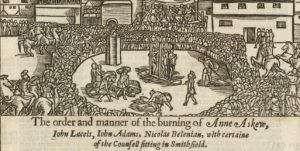I’m starting a new series called, ‘Preaching on’, in which I will take you through my approach to preaching through particular books of the Bible. I’ll cover themes to emphasise, fruitful lines of application, pitfalls to avoid, passage break–ups and so on.
I hope this will both help preaching teams with the book in question, but also model the principles that are relevant planning any expository preaching series.
First cab off the rank is ‘Preaching on Luke.’
Luke’s Gospel Is Long
I preached on Luke at my own church (Trinity Church Adelaide, and then continuing the series at Trinity Church Lockleys when we planted) from 2020 to 2022. I did it over three terms, in twenty-eight sermons. Looking back, I’d do it slightly longer, over thirty-two weeks. Because here’s the thing—and the first point I want to make—Luke is long. Like, super–long; one eighth of the New Testament long. And many of the chapters in Luke are also long. And Luke is dense, too, at points. So you need to take your time and avoid the temptation toward high-level overview that so many of us preachers fall into when faced with a long book. You know what? We’re often the only ones in a rush to get through a book—your people will thank you for taking it slow.
Here’s how I would break it up if I were preaching according to school terms (i.e. in eight-or- nine-week chunks); the basic ‘point’ of each chunk; and some hints and tips.
Chunk 1: Introducing Jesus
- Luke 1
- Luke 2
- Luke 3:1–4:13
- Luke 4:14–44
- Luke 5:1–6:16
- Luke 6:17–49
- Luke 7
- Luke 8
- Luke 9:1–51
This is the introduction to the book, where Luke introduces us to Jesus. This section is super fun! There are great stories, very moving bits (‘I am willing. Be clean’ (Lk 5:13) gets me in the eyes every time); a wonderful build-up as Jesus launches his mission to proclaim freedom for the prisoners and set the oppressed free (Lk 4:18-19); and the ominous build-up of opposition to Jesus from the religious leaders. By the time we get to chapter 9 verse 50, the stage is well and truly set for a showdown between Jesus, his disciples and their mission, and those who oppose them.
Chunk 2: Road Trip to Jerusalem Part 1
- Luke 9:51–10:24
- Luke 10:25–37
- Luke 10:38–11:13
- Luke 11:14–54
- Luke 12:1–34
- Luke 12:35–48
- Luke 12:49–13:9
- Luke 13:10–35
Luke chapter 9 verse 51 marks the turning point in Luke: ‘As the time approached for him to be taken up to heaven, Jesus resolutely set out for Jerusalem.’ The central section of Luke (9:51–19:44) is Jesus’ ‘road trip to Jerusalem’. Like most road trips, there’s a lot of talking along the way. In fact, most of what Luke records about this journey is Jesus’ teaching—your red-letter Bibles will have lots of red in them at this point! You will need to prepare yourself for lots of dense explanation of tricky parables and teaching in chunks 2 and 3: think the parables of the shrewd manager (16:1-18); the rich man and Lazarus (16:20-31); all that stuff about the end of the world and what it means for eschatology (17:20–18:8). So you’ll need to take your time, while also figure out how to keep people engaged as you work through lots of good but dense material. For example, when preaching through this section, I used lots of stories to illustrate the points Jesus was making in his parables
Chunk 3: Road Trip to Jerusalem Part 2
- Luke 14:1–24
- Luke 14:25–35
- Luke 15:1–32
- Luke 16:1–15
- Luke 16:16–31
- Luke 17:1–19
- Luke 17:20–18:8
- Luke 18:8–19:10
- Luke 19:11–44
One of the big distinctives of this central section of Luke’s gospel is the very clear interest in the relationship between Jews and. Gentiles. Gentiles are presented very sympathetically in Luke, as many commentators have observed. But there’s more to it than that. As the story progresses, particularly in chunks 2 and 3, we are shown that Israel, and Jerusalem in particular, are rejecting their Messiah, and so will be rejected as well. Equally surprising, Jesus teaches that the Gentiles will therefore be given the blessing intended for Israel (13:34–35; 19:41–44; 23:27–31). This doesn’t make Luke’s gospel anti-Jewish—not at all! Nevertheless Luke’s gospel is especially clear that the gospel is for all nations (including believing Jews). This is an emphasis that we can pick up on in our preaching. For example, we can point out that, even before Pentecost and the explicit mission to the Gentiles, there is a trajectory towards world mission in the gospels themselves.
There is also lots of material on being a disciple in this central section of Luke. What does it mean to follow Jesus, in all the complexities of life? What does it mean to love your family and yet still put Jesus first (9:59–60)? What does it mean to ‘watch’ carefully for Jesus’ return but still get on with the day to day tasks of life that God also wants you to do (12:35–48)? Chunks 2 and 3 are brilliant for that.
Chunk 4: The Final Week
- Luke 19:45–20:19
- Luke 20:20–21:4
- Luke 21:5–38
- Luke 22:1–38
- Luke 22:39–65
- Luke 22:66–23:25
- Luke 23:26–56
- Luke 24
In chunk 4, Luke falls back into line with the other gospels (much of 9:51 to 19:44 is original to Luke), and we’re on more familiar ground. There is wonderfully rich material here: one of the easiest accounts of the Lord’s Supper from which to explain the atonement (22:14–23); a lengthy and moving account of Jesus’ arrest, trials, and execution (22:47–23:56); and an extended reflection on how Jesus’ life fulfils Old Testament expectations, found nowhere else (24:13-53, see 1:1). Great stuff.
Putting Luke’s Gospel into the Preaching Calendar
How to package all of this in a church preaching calendar? Well, you could always do it in one year—one chunk per term —but I wouldn’t recommend it. There is a risk that people will get bored with it; variety will keep things fresh. At the same time, I also wouldn’t spread it out over four years: people will lose touch with the overall story, I suspect. Instead, I suggest covering chunk 1 in year 1; chunks 2 and 3 in year 2 (possibly with a term of something else in between); and chunk 4 in Term 1 of year 3. This way, if you play it just right, you can end with Jesus’ death and resurrection at Easter.
Some pastors are put off preaching through the entirety of Luke because of its length. Don’t be. It’s great. Just take it slow, feel out its rhythms; you and your people will reap rich rewards.















